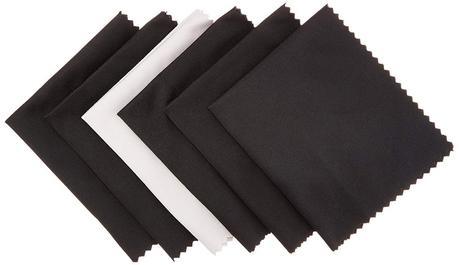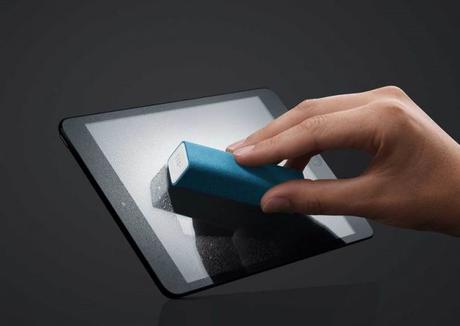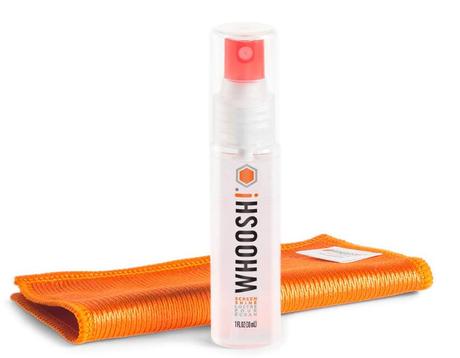Laptop screens get smudged easily no matter whether it’s a matte screen or a simple glossy screen. This is common when the laptop screen staying open for a long time. They also get dirty when they have constantly touched especially touchscreen laptops. The keyboard may also transfer some dust and oil, means that the risk of messy splatters and smudges always remain there.
That is why it is important to clean your laptop screen regularly. In this way, you can maintain the screen’s vivid color definition. In this article, we’ll cover some effective methods to clean a matte laptop screen without damaging it.
Before proceeding to the cleaning process, it is wise to know the difference between the matte screens and glossy screens.
What is Matter Screen?
Laptops have typically two types of screens – a matte screen and glossy screen. The matte screen comes with an anti-glare coating which is helpful at preventing reflections. It allows you to use the laptop in a bright room no matter whether you’re dealing with sunlight or working under the bright fluorescent lights of an office.
One of the biggest advantages of a matte display is that dust is less visible and they’re better for your eyes as you don’t have to look through the reflections.
How to Clean a Matte Laptop Screen?
1. Using a Microfiber Cloth
Microfibre cloths are widely used by camera lovers and glass users. It is the best method to clean glasses and cameras as they are specially designed to clean dust and debris from a glassy surface without leaving any scratches there. They are made of a special piece of fiber cloth to clean delicate surfaces without streaks or scratches them. And, that’s why it is an ultimate solution to clean laptop matte screens.
You could use other types of cloth material like paper towel, toilet paper or a random pieces of cloth, but they will leave tiny particles on your laptop’s screen and could even scratch it even if it’s matte.

How to clean a laptop screen with microfiber cloth:
Step 1: Get a microfiber cloth, specially made for cleaning all sorts of screens and lenses. If you don’t have one, you can buy it from here.
Step 2: Before you start cleaning make sure to switch off your laptop screen so you can clearly see the dust on it. The black screen makes dust more visible and also safer to work with a machine.
Step 3: Wipe the display gently with a microfiber cloth in one direction. Make sure to not apply too much pressure because it can damage your screen. Also, avoid making circular “buffing” motions, as they tend to move the dust around the display and not clean it.
Step 4: Keep cleaning the screen until the dust completely disappears.
2. Using Sponge to remove grime
Microfiber cloth is not so effective if your laptop’s display has some tougher spots of dirt and grime because it will leave dust on your screen. To clean this kind of dust spots, you can use a sponge and distilled water.
You can also use filtered water for it and the sponge should be new. Avoid using simple tap water because it will leave marks on your laptop’s screen.

How to clean a laptop screen with sponge and water
Step 1: Turn off your laptop and unplug the power adapter and battery if possible.
Step 2: Damp the cloth slightly with distilled water and then squeeze it properly. Make sure water is not dripping otherwise it can damage your laptop.
Step3: Wipe the dirty area gently on the laptop’s screen. If you find any dripping water, clean them immediately.
Step 4: After cleaning the screen, let it dry completely before turning on the laptop.
3. Using Cleaning solutions for oily and sticky screen
If both of the above mentioned failed to work for you then you might need a liquid cleaning solution. These cleaning solutions are available in different stores and also include a microfiber cloth.
You can also make your own cleaning solution at home by mixing a proper amount of vinegar and distilled water. White vinegar is helpful in stain removal and doesn’t leave any colors behind. However, you can also use Isopropyl alcohol in place of white vinegar to prepare a cleaning solution.

Get yourself a cleaning solution – they are available for a few dollars on Amazon.
How to clean a laptop screen with a cleaning solution
Step 1: Firstly shut down your laptop, unplugged it from the power supply and remove the battery if possible.
Step 2: Add or Spray some cleaning solution on a microfiber cloth instead of directly applying on screen. Make sure the cloth is damped enough but it should not be too wet.
Step 3: Now, rub the affected area gently in small circles to avoid scratches. Don’t apply too much pressure as it can damage your screen permanently.
Step 4: Once it’s done, wait for the screen to dry out before powering the laptop.
Important tips to safely clean the matte screen
- Don’t use alcohol-based cleaning solutions on your laptop because it can damage the coating layer of the screen and can ruin your laptop. You should use the only lab-based or water-based cleaning solutions for laptop display.
- Avoid using facial tissues or paper towels for cleaning your laptop screen as they can leave scratches on the display. A microfiber cloth is only the best and safe method to clean the laptop’s screen.
- Don’t use the following things: all-purpose cleaners, window cleaner, dish soap or any other kind of soap.
- Prevent your laptop from moisture as it could damage the laptop parts.
- Add laptop cleaning into your daily routine. You can clean your laptop’s screen daily with a microfiber cloth to prevent dust from accumulating.
Conclusion
After reading this article, you have got some idea of how to clean a matte laptop screen. If it’s just dust, you can easily clean it using a microfiber cloth. But, if dust is too sticky on your laptop’s screen then the other two methods will be effective to clean the display.
We hope you liked this article. If you have any queries or suggestions about this guide, let us know in the comment section below.
